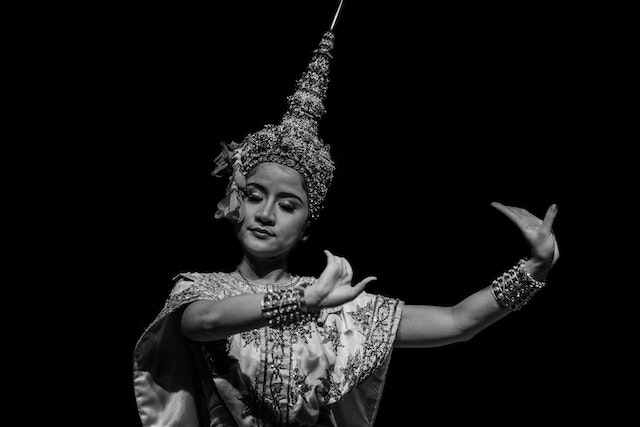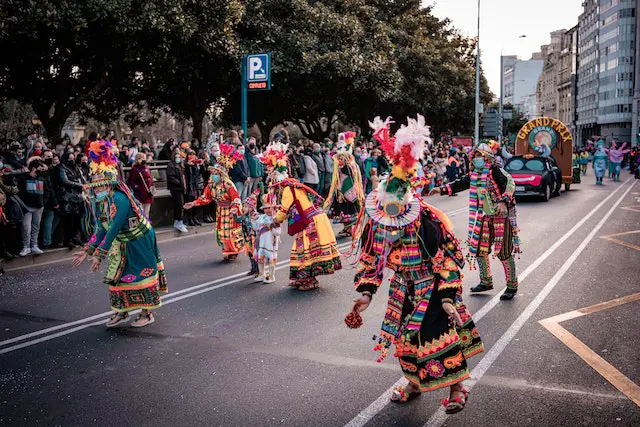Dance has been a part of human culture for thousands of years. It is an expression of our innermost emotions and can be used to communicate, create community, inspire hope and joy, tell stories, and more.
From traditional folk dances to modern street styles, different kinds of dancing have formed the basis for much of our social interactions. In this article, we will explore the importance of dance in society and how it has continued to shape us as individuals and communities.
15 Benefits of Dance in Society
Dance is an ancient form of expression that has been around since the dawn of time. It is a powerful tool for communication, physical and mental health, community building, creativity, and more. Here are 15 reasons why dance is important in our society:
1. Physical Exercise
Dancing provides an excellent form of physical exercise. Not only does it help to improve balance, coordination, and flexibility, but it can also be great fun. This makes it much easier for people of all ages to get involved and stay active.
For instance, dance classes can provide a safe and enjoyable way for seniors to stay fit, while aerobic dance classes can offer an effective cardiovascular workout.

2. Stress Relief
Dancing is a great way to reduce stress and tension after a long day. It helps to release endorphins, the body’s natural feel-good chemical, which can help to improve overall mood and mental health.
Additionally, the physical activity associated with dancing can help to burn off excess energy, allowing people to better manage their stress levels.
3. Cultural Appreciation
By participating in traditional dances or learning about those of other cultures, one can gain a greater appreciation for history and diversity. It is also a great way to bring people together since the common language of dance can transcend cultural boundaries.
According to a recent study, those who participated in traditional and cultural dance activities reported feeling more connected to their heritage, community, and the world.
4. Social Interaction
Dancing provides an opportunity for people of all ages to get together and socialize with each other. Whether it’s at a formal ballroom event or simply taking a class together, the shared experience of dancing helps to create a sense of connection and community.
In addition, dancing can help to break down barriers between people since everyone is able to express themselves through movement.
5. Improved Mental Health
Studies have shown that dance can help to reduce symptoms of depression, anxiety, and stress in both adults and children. In addition, research has found that dancing can help to improve the overall self-esteem and confidence of those who participate in it regularly.

Not only does this make them more comfortable with themselves, but it can also lead to better relationships with others since they no longer feel inhibited by their negative emotions.
6. Cognitive Benefits
Dancing can also be beneficial for cognitive functioning. Research has shown that people who engage in regular physical activity, such as dancing, are less likely to suffer from dementia and Alzheimer’s disease than those who do not.
Dancing helps to improve problem-solving skills, memory recall, and multitasking abilities. It is a great way to keep the mind sharp and active, especially for those who are over 50.
7. Creative Expression
Dance allows people to express themselves creatively without relying on words or other forms of communication. It is a great outlet for emotions and feelings that may be difficult to put into words.
Dancing can help people to develop a better understanding of their own body and how it moves. This can be especially beneficial for those who are not as familiar with their physicality or have difficulty expressing themselves verbally.

8. Improved Posture
Dancing regularly can also help to improve posture, which is important for both physical and mental health. Not only does good posture look more attractive, but it can also help to reduce back and neck pain.
Additionally, having good posture can improve breathing and air circulation, reduce fatigue, and make it easier to perform everyday activities. All of these factors combined can lead to a healthier lifestyle overall.
9. Improved Cardiovascular Health
Dancing is an excellent form of aerobic exercise, which can help to strengthen the heart and improve overall cardiovascular health.
Research has shown that those who participate in regular physical activity, such as dancing, have a lower risk of developing high blood pressure and other cardiovascular diseases. You can even burn up to 300 calories in just one hour of vigorous dancing!
10. Reduced Risk Of Injury
Dancing is a low-impact form of exercise, which means that it carries less risk of injury than other sports and activities. Additionally, dance movements require more coordination and control than most other forms of exercise, so you are less likely to make a mistake that could result in an injury.
This makes dancing a great choice for those who are just starting out with exercise or for those who may have existing mobility issues.
11. Improved Flexibility
Dancing also helps to improve flexibility, as it requires constant stretching and movement. Improved flexibility can help to reduce the risk of injury during physical activities and make everyday movements easier.
In addition, improved flexibility can lead to better balance and coordination, two skills that are important for remaining active throughout life.
12. Social Benefits
Dancing can also be a great way to socialize and meet new people. It is often done in groups, so it provides an excellent opportunity for socializing with others who enjoy the same activity.
Additionally, dancing classes are often available at local community centres and other venues, which makes it easy to find like-minded individuals. It also provides a great way to learn new moves and develop coordination skills in a fun, friendly environment.

13. Dance Connects People
No matter where you come from, dancing has the power to bring people together and create a sense of community.
Through physical contact, facial expressions, and music, dancers can experience a connection with one another that transcends language barriers and cultural differences.
Dancing can help to foster mutual understanding and respect, which is especially important in today’s increasingly diverse and globalized world. As a result, it can be a powerful tool for connecting people of all ages and backgrounds.
14. Enhanced Mood and Quality of Life
Finally, dancing can improve overall mood and quality of life. Studies have shown that regular physical activity, such as dancing, can help to reduce stress and improve mental well-being.
Dancing increases endorphin production in the brain, which can lead to improved energy levels and a generally happier disposition. As a result, it can make us feel more energized and motivated in our everyday lives.
15. Increased Confidence
Regularly participating in dance can also help to improve confidence. As dancers become more skilled and adept at their craft, they develop a greater sense of self-assurance that can be applied to other areas of life.
Dancing is an excellent way to express yourself creatively and build a connection with others. When you feel more confident in your movements, it can help to boost your self-esteem and make you feel more comfortable in social settings.
Conclusion
Dancing is an enjoyable form of exercise that can provide numerous physical, mental, and social benefits. It is a low-impact activity that can help to improve flexibility, cardiovascular health, and confidence.
Additionally, it provides a great way to socialize with others who share the same interests and passion for movement. So what are you waiting for? Put on some music and enjoy an hour of vigorous dancing. You’ll be glad you did.